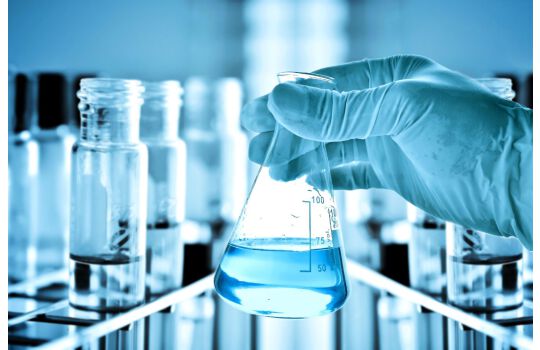Tetrachloroethylene, also known under the systematic name tetrachloroethene, or perchloroethylene ("perc" or "PERC"), and many other names, is a chlorocarbon with the formula Cl2C=CCl2. It is a colorless liquid widely used for dry cleaning of fabrics, hence it is sometimes called "dry-cleaning fluid". It has a sweet odor detectable by most people at a concentration of 1 part per million (1 ppm). Worldwide production was about 1 million metric tons (980,000 long tons; 1,100,000 short tons) in 1985.[3]
Contents
1 Production
2 Uses
2.1 Historical applications
3 Health and safety
3.1 Testing for exposure
4 Environmental contamination
5 References
6 Further reading
7 External links
Production
Michael Faraday first synthesized tetrachloroethylene in 1821 by thermal decomposition of hexachloroethane.
C2Cl6 → C2Cl4 + Cl2
Most tetrachloroethylene is produced by high temperature chlorinolysis of light hydrocarbons. The method is related to Faraday's discovery since hexachloroethane is generated and thermally decomposes.[3] Side products include carbon tetrachloride, hydrogen chloride, and hexachlorobutadiene.
Several other methods have been developed. When 1,2-dichloroethane is heated to 400 °C with chlorine, tetrachloroethylene is produced by the chemical reaction:
ClCH2CH2Cl + 3 Cl2 → Cl2C=CCl2 + 4 HCl
This reaction can be catalyzed by a mixture of potassium chloride and aluminium chloride or by activated carbon. Trichloroethylene is a major byproduct, which is separated by distillation.
According to a United States Environmental Protection Agency (EPA) report of 1976, the quantity of tetrachloroethylene produced in the United States in 1973 totaled 320,000 metric tons (706 million lb).[4] By 1993, the volume produced in the United States had dropped to 123,000 metric tons (271 million lb).[5]
Uses
Tetrachloroethylene is an excellent solvent for organic materials. Otherwise it is volatile, highly stable, and nonflammable. For these reasons, it is widely used in dry cleaning. It is also used to degrease metal parts in the automotive and other metalworking industries, usually as a mixture with other chlorocarbons. It appears in a few consumer products including paint strippers and spot removers.
It is used in neutrino detectors where a neutrino interacts with a neutron in the chlorine atom and converts it to a proton to form argon.
Historical applications
Tetrachloroethylene was once extensively used as an intermediate in the manufacture of HFC-134a and related refrigerants. In the early 20th century, tetrachloroethene was used for the treatment for hookworm infestation.[6]


